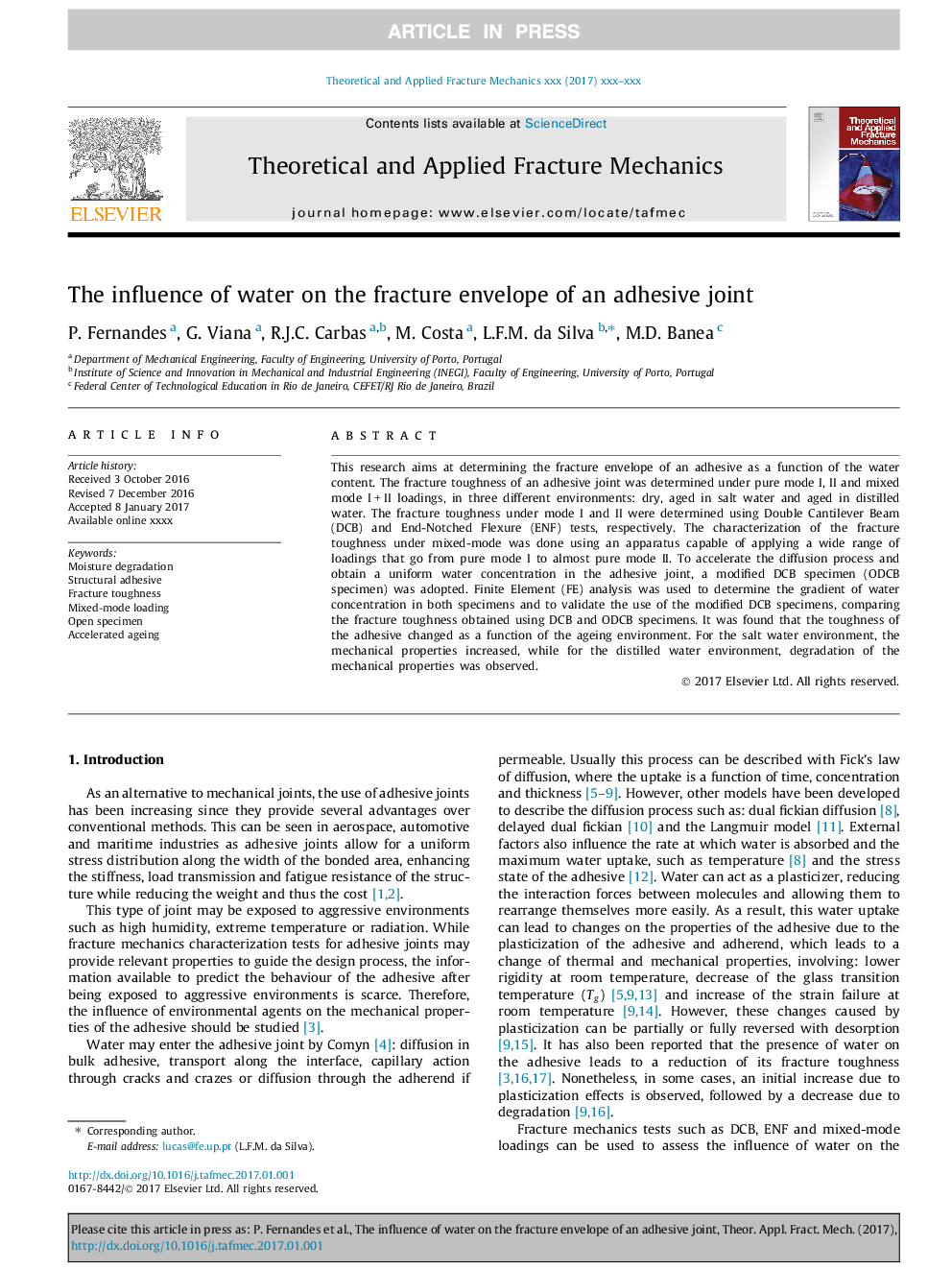| Article ID | Journal | Published Year | Pages | File Type |
|---|---|---|---|---|
| 5019845 | Theoretical and Applied Fracture Mechanics | 2017 | 15 Pages |
Abstract
This research aims at determining the fracture envelope of an adhesive as a function of the water content. The fracture toughness of an adhesive joint was determined under pure mode I, II and mixed mode IÂ +Â II loadings, in three different environments: dry, aged in salt water and aged in distilled water. The fracture toughness under mode I and II were determined using Double Cantilever Beam (DCB) and End-Notched Flexure (ENF) tests, respectively. The characterization of the fracture toughness under mixed-mode was done using an apparatus capable of applying a wide range of loadings that go from pure mode I to almost pure mode II. To accelerate the diffusion process and obtain a uniform water concentration in the adhesive joint, a modified DCB specimen (ODCB specimen) was adopted. Finite Element (FE) analysis was used to determine the gradient of water concentration in both specimens and to validate the use of the modified DCB specimens, comparing the fracture toughness obtained using DCB and ODCB specimens. It was found that the toughness of the adhesive changed as a function of the ageing environment. For the salt water environment, the mechanical properties increased, while for the distilled water environment, degradation of the mechanical properties was observed.
Keywords
Related Topics
Physical Sciences and Engineering
Engineering
Mechanical Engineering
Authors
P. Fernandes, G. Viana, R.J.C. Carbas, M. Costa, L.F.M. da Silva, M.D. Banea,
